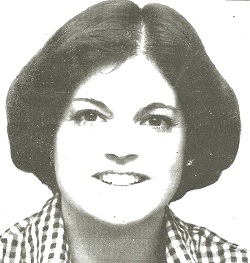Doctors Won’t Treat My Chronic Pain
/By Leanne Gooch, Guest Columnist
I have never been addicted to anything.
I feel the need to preface any conversation about my chronic pain with that statement. I have degeneration in my neck, arthritis, spinal stenosis, failed back surgery syndrome, and some other names that have been thrown into my medical charts.
A layperson without chronic pain would wonder why I feel the need to document every boring detail of my health history. It’s because I’ve had to explain every minute detail to each and every provider I’ve seen. For 20 years!
Initially, when my pain started, I had a good primary care doctor who tried hard to find and treat the cause. He prescribed pain medications and sent me to many specialists. But after injections, physical therapy, rehabilitation, etc., he became the first in a long line of doctors who would not treat me as a pain patient.
I wasn’t considered “chronic” until the 10th year. I learned during that time that women are viewed by the medical profession as weak for reporting their pain. I have seen the faces of both men (doctors) and women (nurses) who judged my pain story as being overly dramatic and embellished.
I was eventually sent to a hotshot, top-of-his-game neurosurgeon. He said I had degeneration in my spine that they would normally see in elderly patients, 60 or 70 years of age. I was told a surgery would fix me all up. They would cut, put some donor bone in, some screws to hold it all together, and that constant aching pain would be gone!
I signed on the dotted line. I was only 25 years old. Of course, now we know those surgeries are a very bad idea, especially for someone so young, because even if they’re effective in the short term, all that hardware eventually leads to further degeneration with age.
I had a spinal fusion, was patted on the head and sent my way. In follow-up exams with the surgeon, I was told everything was perfect and that my pain would subside when I healed. “Go live your life,” he said.
LEANNE GOOCH
Yeah, not so much. I spent the next four years in even more pain and was dismissed by no less than six doctors, who claimed that because my x-rays showed everything was fine, I must be fine. I didn’t need further treatment. I didn’t need pain medication. There’s no way I could be in the pain I claimed to be in.
Eventually, I got in with another hotshot surgeon, but this time it was at a hotshot hospital! They finally unearthed the fact that my fusion never did fuse. I had another surgery, but there were complications. They said my body rejected the donor bone. The bone would have to come from me, from my hip. They would need to cut the front and back of my neck, and my hip. They’d also put in more screws, metal plates and a metal bracket.
The second surgery was not successful in ridding me of any pain.
I was back on the merry-go-round of trying to find another doctor. In the interim, I’d gain and lose jobs due to whatever had taken up residence in my once amazingly functional body. I’d gain and lose medical insurance as well. Needless to say, I also went into deep and terrifying medical debt, while also being denied pain treatment. I was ineligible for individual policies because I had a pre-existing condition.
I was forced into taking antidepressants when I didn’t need them. I wasn’t depressed, I was in pain. I was also forced to undergo counseling twice; both times I was dismissed after one visit because it wasn’t a mental issue I was dealing with. I was too embarrassed to properly express my pain levels. Forced to downplay how desperate I was for pain relief.
I was even turned away by receptionists, who flatly and rudely said, “We don’t see or treat pain patients.”
That’s a short synopsis of why I am where I am 20 years later, essentially bedridden. The pain doesn’t allow for restful sleep. I can feel my health disappearing. I now have weight issues from hypothyroidism, no appetite most of the time, insomnia that doctors won’t treat, and very high blood pressure.
After 18 years, I finally got to a pain clinic, as they call them now. The doctor has two physician assistants, one who believes everyone is a drug addict and one who wants to do a good job, but whose hands are tied by government guidelines and overreach.
I am under-treated by a long shot, yet I am harassed by the pharmacist every single month. I use one pharmacy and one doctor, but still run into denial or delay getting a prescription filled. I had to explain and essentially beg the pharmacist to get a small script filled after my most recent invasive surgery for a spinal cord stimulator.
Four months later, I’m still in tremendous pain and have a nearly constant tremor in my right arm. The stimulator seems to hit on a nerve and my muscles seize up, the pain rising to levels that I didn’t know a human could withstand. It’s awful. It’s painful. And I am under-medicated because of criminals I never had a thing to do with.
I have been told that my pain will never get better and can never be cured. It will only get worse as the degeneration continues. Wishing for it to be over is a pervasive daily thought. I have to work diligently to chase those thoughts away, so as not to fall prey to giving up.
My doctors can’t or won’t treat me because my chronic pain contributed to all the addicts all over the world. I’ll admit that’s a ridiculous statement when they admit they’ve gone too far in denying me proper medical care.
I am 43 years old.
Leanne Gooch lives in Missouri.
Pain News Network invites other readers to share their stories with us. Send them to editor@painnewsnetwork.org.
The information in this column should not be considered as professional medical advice, diagnosis or treatment. It is for informational purposes only and represents the author’s opinions alone. It does not inherently express or reflect the views, opinions and/or positions of Pain News Network.





































